Opened: 19 Apr 1997
Location: Pioneer Village
Manufactured By: Intamin AG – Wollerau, Switzerland
Engineered By: Glynn Geotechnical Engineering – Lockport, New York
Ride Model: Rapids Ride
Cost: $7,500,000
Ride Duration: 5-6 min
Channel Length: 1,760 ft
Number Of Rafts: 15
Ride Capacity: 9 per raft
Hourly Capacity: 1,500 riders per hour
When Pioneer Village opened at Lagoon in 1976, the area east of Farmington Creek was all open pastureland, home to herds of deer and bison. The animals could be viewed by the passing train of the Pioneer Village Railroad or by the Stagecoach that traveled dirt roads through the area.
About seven years later, those pastures were inundated with mud and debris from heavy flooding of Rudd Creek in the spring of 1983. If it hadn’t been for that large, open space, the floods might have caused considerably more damage to Lagoon than it did that year.
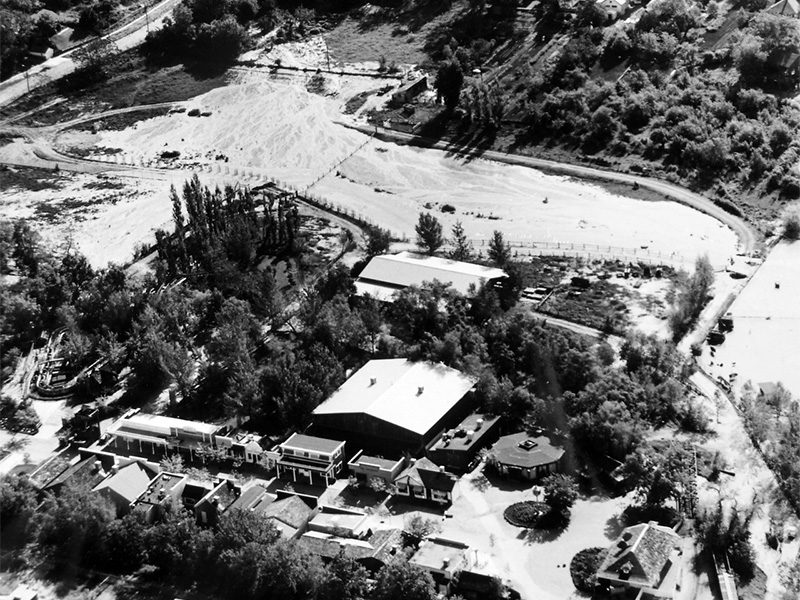
By the late ’80s, Lagoon had acquired about 12 acres of land east of the picnic terraces, on the other side of a public road named Lagoon Lane. In order to expand the park onto the new property, Lagoon officials approached Farmington’s city council about closing a portion of the road. After a few years, Lagoon and the city came to an agreement. The city would close a section of the road for Lagoon to connect their separated parcels, and as part of the park’s expansion, Lagoon agreed to construct a trail that would be open to the public along the edge of their property and act as a buffer zone. It would also tie in to a larger upcoming public trail system extending from Farmington Canyon to the shorelands of the Great Salt Lake.
The agreement was finalized in 1992 and the first phase of the trail was begun in spring of 1993. As part of the approval process, Lagoon was asked to submit a conceptual plan for the new portion of the park. Along with the trail, other proposed public features included a pond, picnic pavilions, tennis courts and a ball field. Within the park, the plan showed an extended Log Flume ride and a mine train coaster with a river rapids ride between the two.
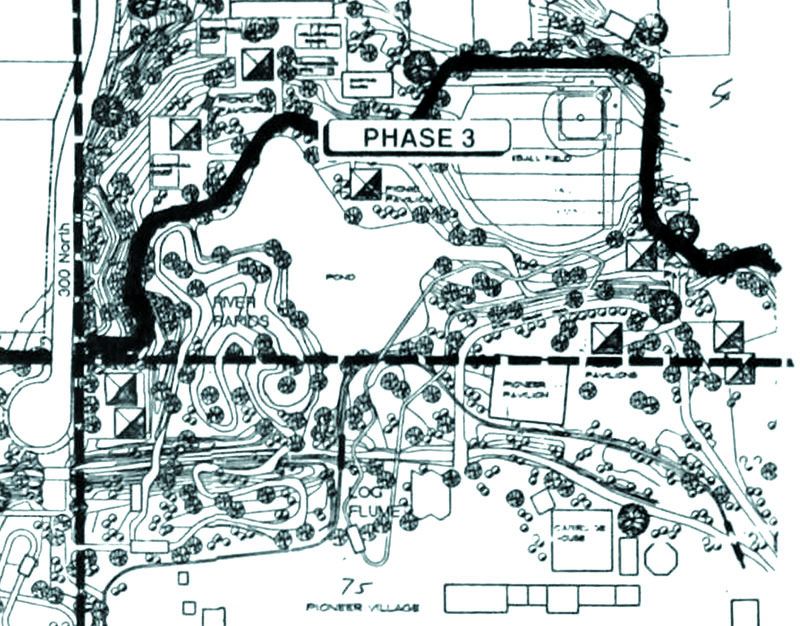
The river rapids ride was first mentioned as a possibility in January 1991. Early on, it was compared to taking a trip down the Snake River. The layout of the ride submitted in 1992 was far from being set in stone, but the idea at the time was to put the entrance and loading area at the north end of Pioneer Village, in the area of the Coalville Chapel. From there the path would cross over Farmington Creek and after winding around several times it would follow the edge of the new pond and cross the creek again on its way back to the station.
Over time, the mine train coaster and extended Log Flume were dropped. The location first planned for the pond (actually a reservoir for the rapids ride) was shifted to the south, taking up part of the space that would’ve been needed for the ball field. The sports facilities and public pavilions were only dependent on the city’s help and it seems the city either had no interest or no ability to contribute to them. The ride itself would be built farther east.
While in the planning stages, media reports sometimes called it Snake River Rapids. The first rumblings of actual construction were in 1994 when the Deseret News reported, “A major river-rafting water ride is tentatively scheduled to begin construction this year or next year as Lagoon expands eastward. It won’t be open before 1996.”
The estimate for opening was accurate, but land wasn’t cleared until the summer of 1996 with construction beginning in mid-September of that year. Concrete and earthwork was designed and overseen by Glynn Geotechnical Engineering of New York. GGE estimated that 20,000 cubic yards of earth was moved for the ride and 6,500 cubic yards of reinforced concrete was used. The project earned them an excellence award from the American Concrete Institute.
The ride system and rafts are a product of Intamin, a Swiss company that began manufacturing amusement rides in 1967. They started developing rapids rides in the late 1970s, opening the first of its kind in the world at AstroWorld in Texas in 1980.
Because production of TV commercials and promotional photos would need to start well before the new ride was operational, a similar ride in another park was needed. So Intamin’s Rip Roaring Rapids at Great America in California was used as a stand-in for Lagoon’s Rattlesnake Rapids in the 1997 promotional campaign.
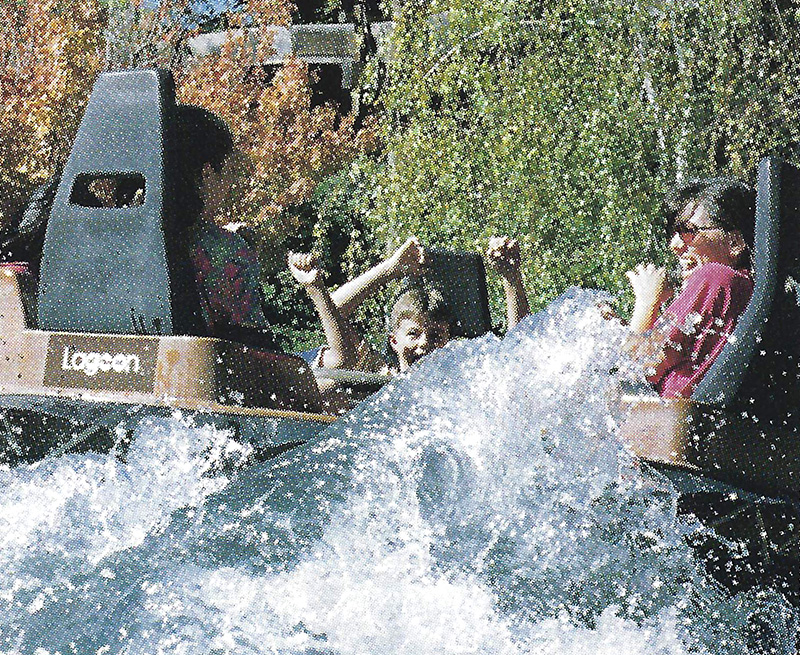
When it first opened to the public on a Saturday in mid-April 1997, a lot of elements were still incomplete or inoperative. The wave maker, geysers and final waterfall weren’t ready. There was also supposed to be a tunnel with a large rattlesnake spraying passengers from above. The tunnel was completed later, but without the snake. Instead, there’s a large rattlesnake as part of the sign over the entrance, which used to occasionally hiss at guests.
The landscaping was also a work in progress and it looked pretty barren at first. More and more trees and plants were added and after a few years of growth, it started to look like a real forest.
A new plaza accompanied the ride with a souvenir stand named Peddler’s Place, a water well, a Rising Waters game, Rattlesnake Grub and tables along a section where non-riders often wait to watch for the rest of their group. In 2016, the Rising Waters game was removed and walls were added to the structure it was housed in to convert it into a new souvenir shop. Later, the old souvenir stand became a leap frog game which closed after a few years.
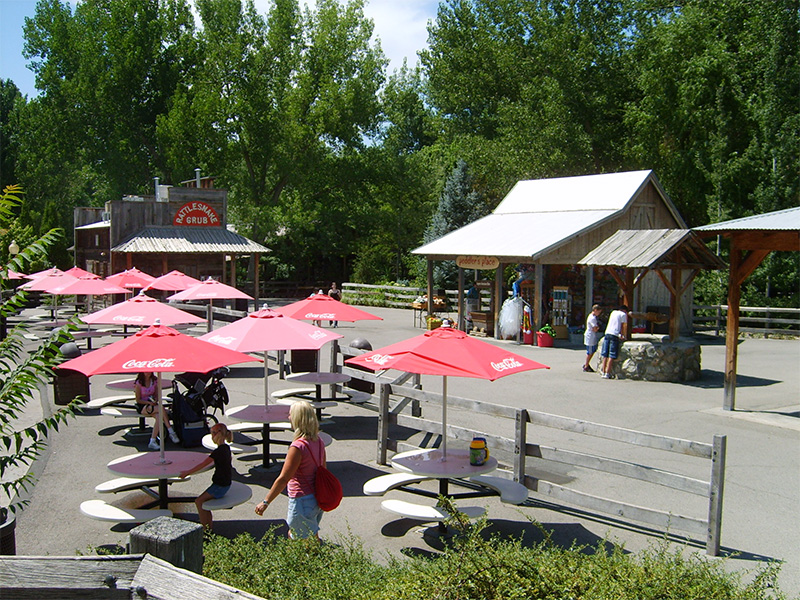
There are also a series of blasting machines with T-handles. For a quarter, guests can attempt to spray riders with water, if they can time it right. Many have been removed as they have often been problematic over the years.
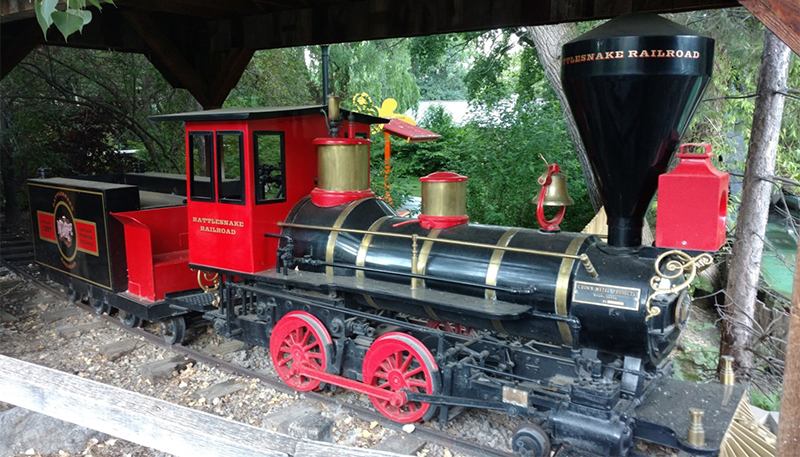
On display, between the plaza and the Log Flume, is a locomotive engine and tender. The engine used to be a part of the Wild Kingdom Train ride and the tracks that curve around the Log Flume are about where the ride path used to be for the old Pioneer Village Railroad that closed in 1988. Beyond that section, the tracks wind around over the tunnel and through the middle of the ride where they’re intersected by the queue.
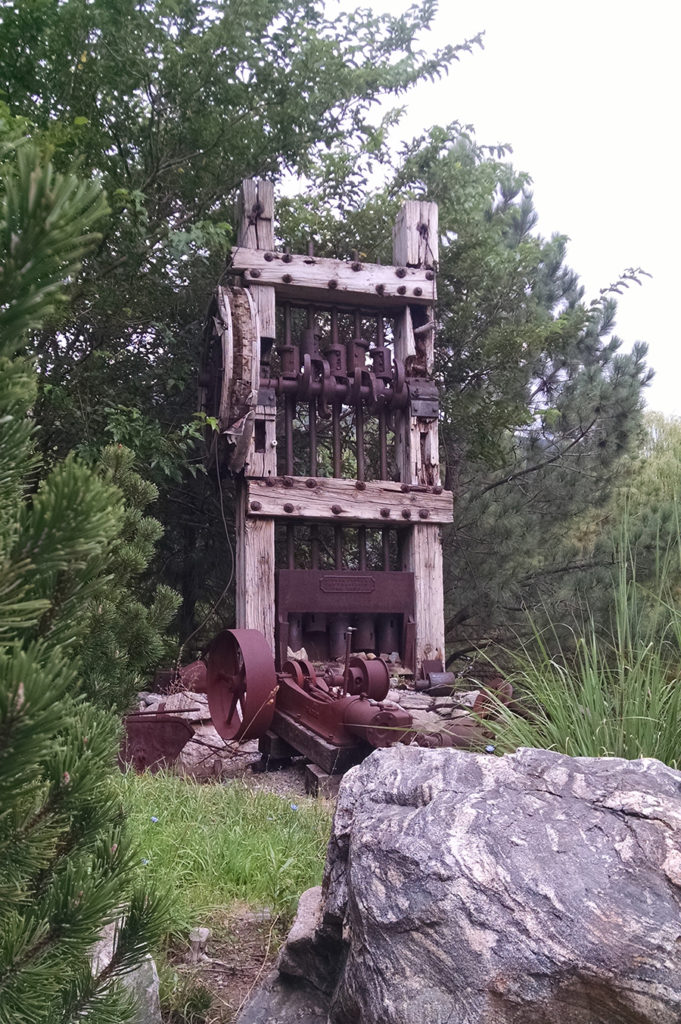
All of the mining equipment scattered around the ride is authentic and is said to have been collected from former mines in Colorado and possibly other western states.
While waiting in line, the voice of an “oldtimer” shares quick stories and warns guests about the dangers of the rapids. At the end of the line is a staircase down to a turntable that continuously rotates as guests load and unload the rafts. For guests in wheelchairs, an employee will take them and their group across a bridge and around to a ramp on the outside of the loading area, near a building disguised as several abandoned buildings.
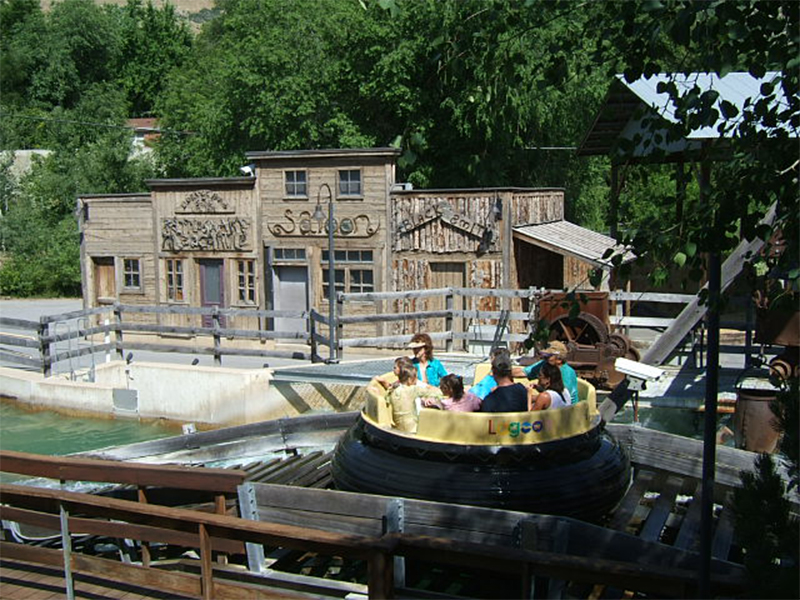
The trip down the “river” starts slowly, but after rounding the first curve, it quickly picks up speed. Riders pass a settler’s cabin and an outhouse with a steady stream of water shooting through the cracked door. After a few more curves and a long rock waterfall, the waterway turns toward the south and continues past the wave maker, disguised as a mine shaft. As the rapids get choppier, rafts are sent through a misty tunnel that empties out by the queue. The rafts pass through a gauntlet of geysers and then slowly approach the large waterfall that almost always soaks everybody who thinks they made it through the ride without consequence. The ride path then makes one last turn, past the reservoir and through one more little dip before being conveyed back up to the loading area.
In the morning, employees start filling the channel with water about an hour before the park opens to guests. The water is pumped from the reservoir up to the loading section by two 215-horsepower pumps with one backup pump. At the end of the day, the pumps are turned off and the water drains back into the reservoir.
At first, Rattlesnake Rapids used to be closed during Frightmares, but more recently it’s not uncommon for the ride to be open in the fall, even on cold, rainy days when only a handful of thrillseekers want to ride. The large waterfall near the end is usually turned off on cold days.

Because Rattlesnake Rapids replaced what had been the path for the Stagecoach for about 20 years, many people assumed it had closed. But the path was just altered. The new asphalt path traveled around the reservoir to the east side of Rattlesnake Rapids where it circled around the hay barn and returned to the south end of Main Street in Pioneer Village. The Stagecoach eventually closed in 2009 and since then, the only way to see the bison has been from the Lagoon Trail.
Rattlesnake Rapids is one of many water rides in Lagoon’s history. There were a variety of boat rides as well as the Shoot-The-Chutes ride in the early days, but none were meant to get riders wet until the Log Flume, which opened in 1975. Nearly 20 years passed before the next water ride came along (Hydro-Luge in 1994). Following Rattlesnake Rapids was Cliffhanger in 2001 and OdySea in 2008. In addition to the water rides, the Interactive Fountain opened in the center of the Midway in 2004, allowing anyone to quickly cool off without waiting in line.

GALLERY

MORE FROM LHP
OTHER LINKS
See how barren the area looked in May 1997.
Hear the audio from the queue in this POV video.

ReferenCES
Lagoon losing a lot of cash. Deseret News, 1 Jun 1983.
Rosebrock, Don. Lagoon seeks to use street in Farmington for expansion. Deseret News, 22 Jan 1991.
Eddington, Mark. Lagoon may ascend to new heights. Davis County Clipper, Mar 1992.
Arave, Lynn. Changes traditional at Lagoon. Deseret News, 12 Apr 1993.
Here’s the low-down on the ups and downs. Deseret News, 27 May 1994.
Arave, Lynn. Rattlesnake Rapids – Lagoon’s latest splash. Deseret News, 13 Mar 1997.
Arave, Lynn. Rattlesnake Rapids makes a huge splash at Lagoon. Deseret News, 27 Jun 1997.
Lagoon reins in talk of Stagecoach ride’s demise. Deseret News, 11 Jul 1997.
Project Profile – Lagoon Park Rattlesnake River. GlynnGroup.com, 2003 webpage accessed via Internet Archive.






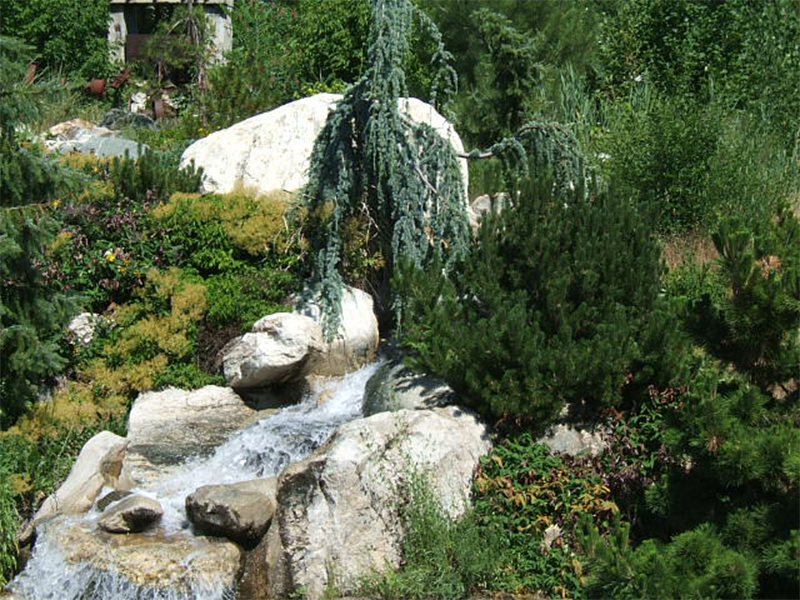
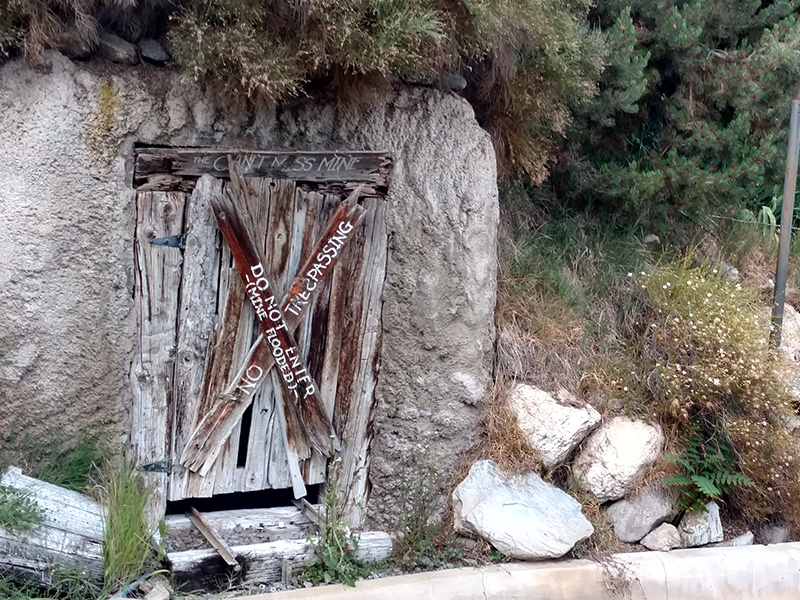
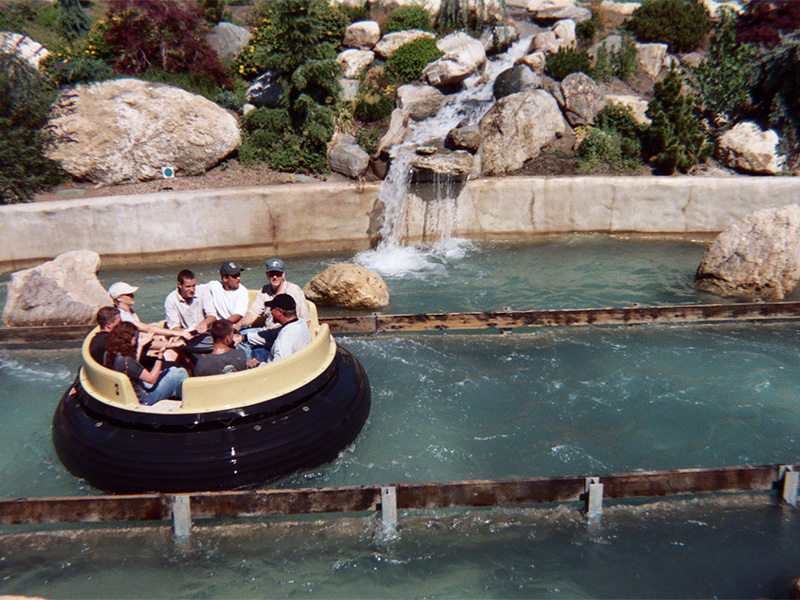



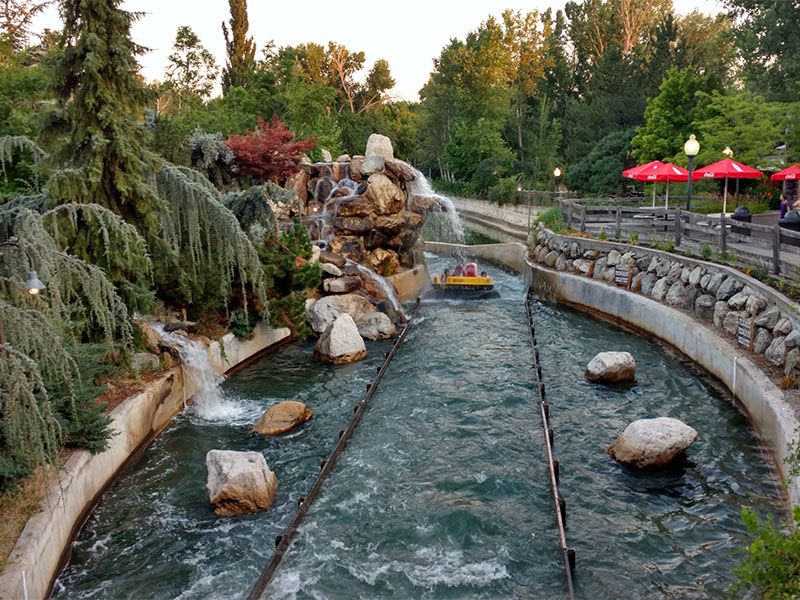
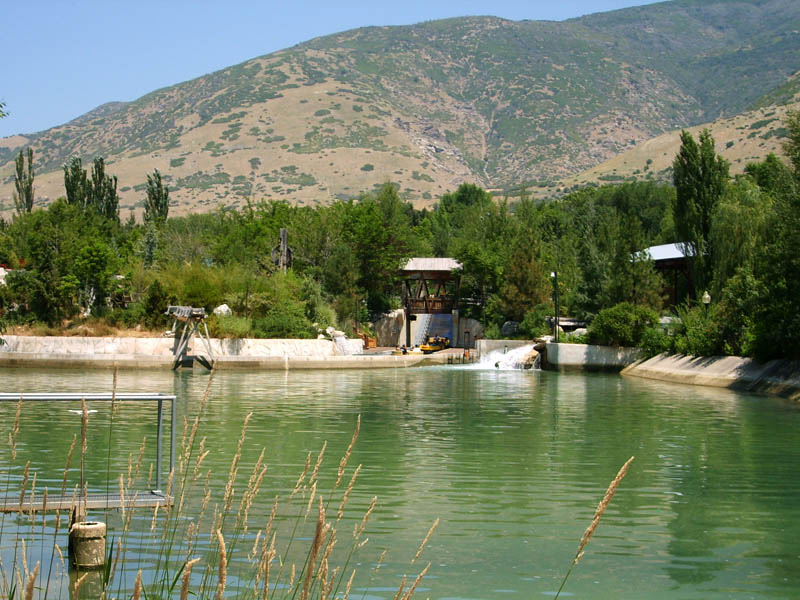
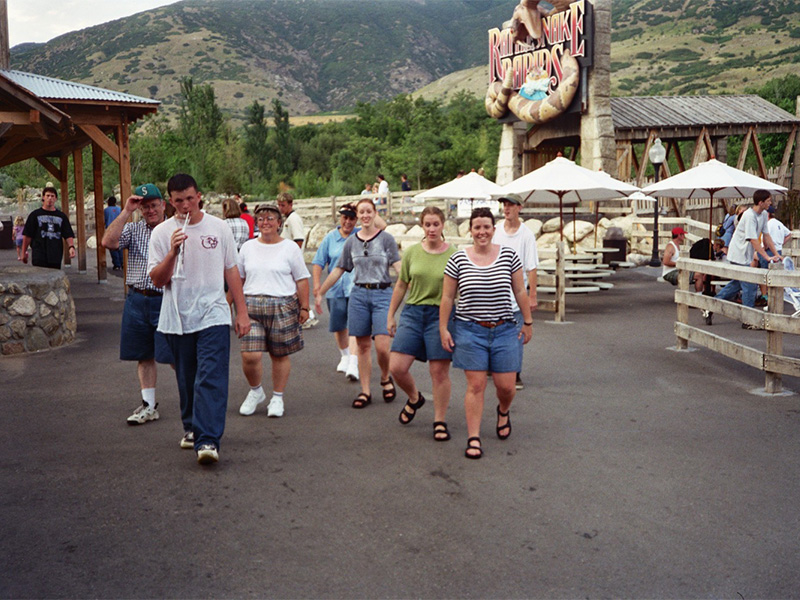
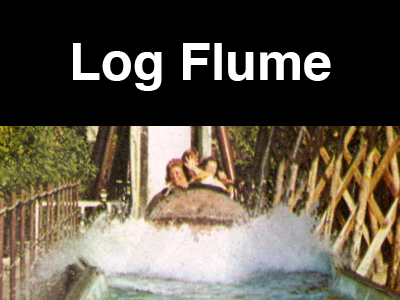
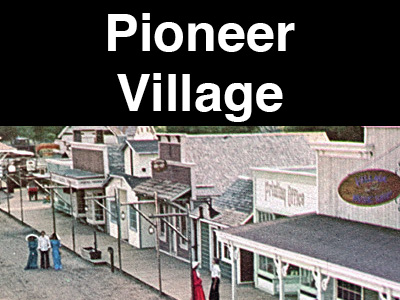
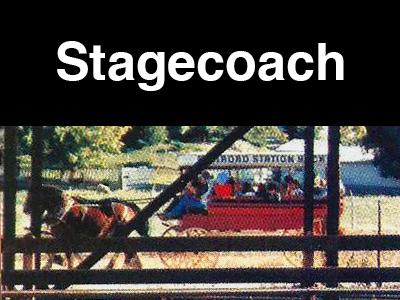
One reply on “Rattlesnake Rapids”
Really fascinating that they originally were going to build a mine train coaster in the area. As a kid, having been to Disneyland for the first time, and I was infatuated with the idea of some kind of mine train being installed in Pioneer village.
I was smart enough then to know that there were heavy space limitations now, but my supposed genius idea was very… quaint in hindsight. I thought that it would be simple to build the entire ride underground – not realizing that modern safety standards basically would require you to dig up all of pioneer village where you’d want to lay the track. Even if it didn’t, it would of course be incredibly expensive.
But nonetheless, an interesting look into what might have been.